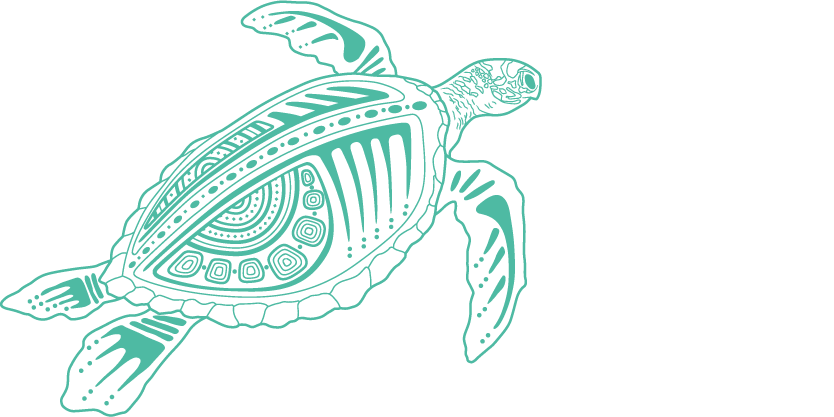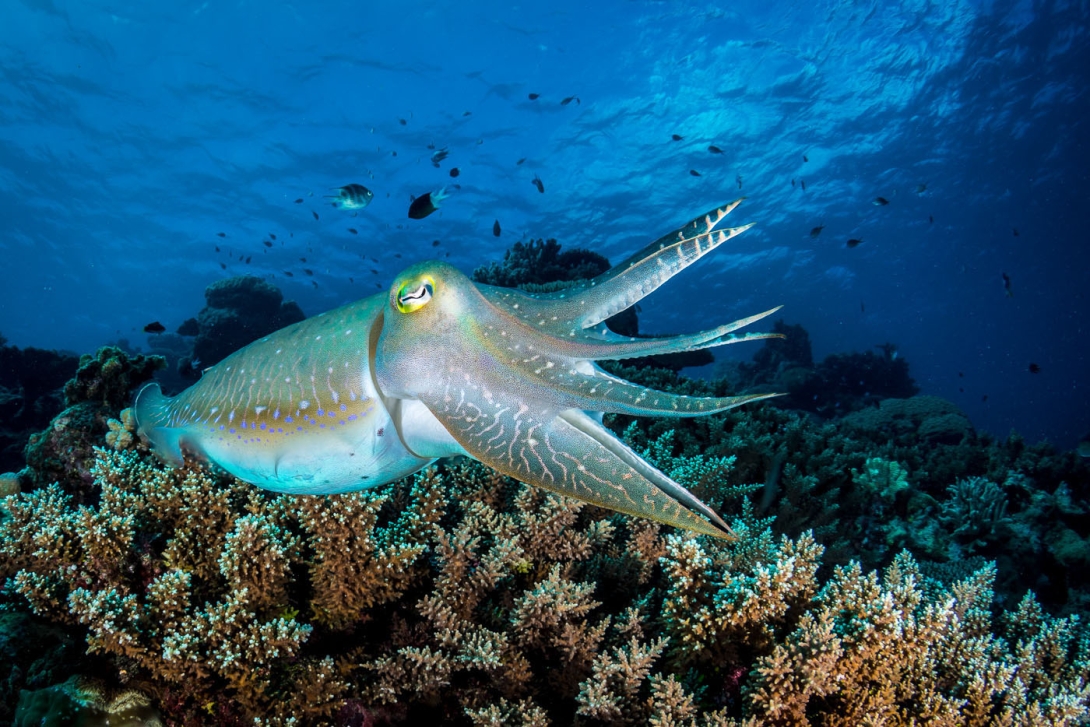34.
Wolfe, K., Kenyon, T.M., Desbiens, A., de la Motte, K. and Mumby, P.J. 2023, Hierarchical drivers of cryptic biodiversity on coral reefs, Ecological Monographs: 27
109.
Cooley, S.R., Schoeman, D.S., Bopp, L., Boyd, P., Donner, S., et al. 2022, Oceans and coastal ecosystems and their services, in Climate Change 2022: Impacts, Adaptation and Vulnerability. Contribution of Working Group II to the Sixth Assessment Report of the Intergovernmental Panel on Climate Change Cambridge University Press, Cambridge, UK and New York, USA, pp. 379-550.
204.
Stella, J.S., Wolfe, K., Roff, G., Rogers, A., Priest, M., et al. 2022, Functional and phylogenetic responses of motile cryptofauna to habitat degradation, Journal of Animal Ecology 91(11): 2203-2219.
225.
McNeil, M., Firn, J., Nothdurft, L.D., Pearse, A.R., Webster, J.M., et al. 2021, Inter-reef Halimeda algal habitats within the Great Barrier Reef support a distinct biotic community and high biodiversity, Nature Ecology & Evolution 5: 647-655.
313.
Thompson, A., Costello, P., Davidson, J., Logan, M. and Coleman, G. 2021, Marine Monitoring Program: annual report for inshore coral reef monitoring: 2019 to 2020, Great Barrier Reef Marine Park Authority, Townsville.
315.
O’Brien, P.A., Tan, S., Yang, C., Frade, P.R., Andreakis, N., et al. 2020, Diverse coral reef invertebrates exhibit patterns of phylosymbiosis, The ISME Journal 14(9): 2211-2222.
316.
Watson, S. and Neo, M.L. 2021, Conserving threatened species during rapid environmental change: using biological responses to inform management strategies of giant clams, Conservation Physiology 9(1): coab082.
317.
De Goeij, J.M., Van Oevelen, D., Vermeij, M.J., Osinga, R., Middelburg, J.J., et al. 2013, Surviving in a marine desert: the sponge loop retains resources within coral reefs, Science 342(6154): 108-110.
318.
Hutchings, P., Kingsford, M. and Hoegh-Guldberg, O. 2019, The Great Barrier Reef: biology, environment and management, 2nd edn, CSIRO Publishing, Clayton South.
319.
Stella, J.S., Prachett, M.S., Hutchings, P.A. and Jones, G.P. 2011, Coral-associated invertebrates: diversity, ecological importance and vulnerability to disturbance, in Oceanography and Marine Biology, eds R. Gibson, R. Atkinson, J. Gordon, I. Smith and D. Hughes, Taylor & Francis, Oxford, pp. 43-104.
320.
Wolfe, K., Anthony, K., Babcock, R.C., Bay, L., Bourne, D.G., et al., 2020, Priority species to support the functional integrity of coral reefs, in Oceanography and Marine Biology – An Annual Review | Volume 58, eds S.J. Hawkins, A.L. Allcock, A. E. Bates, A.J. Evans, L.B. Firth, et al., Taylor & Francis, London, pp. 179–318.
321.
Hutchings, P. 2008, Role of polychaetes in bioerosion of coral substrates, Current Developments in Bioerosion: 249-264.
322.
Stella, J.S., Munday, P.L. and Jones, G.P. 2011, Effects of coral bleaching on the obligate coral-dwelling crab Trapezia cymodoce, Coral Reefs 30: 719-727.
323.
Stella, J.S., Munday, P.L., Walker, S.P.W., Pratchett, M.S. and Jones, G.P. 2014, From cooperation to combat: adverse effect of thermal stress in a symbiotic coral-crustacean community, Oecologia 174: 1187-1195.
324.
Coppock, A.G., Kingsford, M.J., Battershill, C.N. and Jones, G.P. 2022, Significance of fish–sponge interactions in coral reef ecosystems, Coral Reefs 41(4): 1285-1308.
325.
Sutcliffe, P.R., Hooper, J.N. and Pitcher, C.R. 2010, The most common sponges on the Great Barrier Reef seabed, Australia, include species new to science (Phylum Porifera), Zootaxa 2616(1): 1–30.
326.
Wolfe, K. and Byrne, M. 2022, Overview of the Great Barrier Reef sea cucumber fishery with focus on vulnerable and endangered species, Biological Conservation 266: 109451.
327.
Johnston, D., Chandrapavan, A., Walton, L., Beckmann, C., Johnson, D., et al. 2021, Blue Swimmer Crab Portunus armatus in Status of Australian fish stocks reports, Fisheries Research and Development Corporation, Canberra.
328.
Saunders, T., Johnson, D., Johnston, D. and Walton, L. 2021, Mud Crabs Scylla spp., Scylla serrata, Scylla olivacea in Status of Australian fish stocks reports, Fisheries Research and Development Corporation, Canberra.
329.
French, S.M. 2023, Stock assessment of Ballot’s saucer scallops (Ylistrum balloti) in Queensland, Australia, with data to October 2022. Technical report, State of Queensland, Brisbane.
330.
Pinsky, M.L., Eikeset, A.M., McCauley, D.J., Payne, J.L. and Sunday, J.M. 2019, Greater vulnerability to warming of marine versus terrestrial ectotherms, Nature 569(7754): 108-111.
331.
Lang, B.J., Donelson, J.M., Bairos‐Novak, K.R., Wheeler, C.R., Caballes, C.F., et al. 2023, Impacts of ocean warming on echinoderms: a meta‐analysis, Ecology and Evolution 13(8): e10307.
332.
Brown, S.C., Mellin, C., García Molinos, J., Lorenzen, E.D. and Fordham, D.A. 2022, Faster ocean warming threatens richest areas of marine biodiversity, Global Change Biology 28(19): 5849-5858.
333.
Smith, K.E., Burrows, M.T., Hobday, A.J., King, N.G., Moore, P.J., et al. 2023, Biological impacts of marine heatwaves, Annual Review of Marine Science 15: 119-145.
334.
Shanks, A.L., Rasmuson, L.K., Valley, J.R., Jarvis, M.A., Salant, C., et al. 2020, Marine heat waves, climate change, and failed spawning by coastal invertebrates, Limnology and Oceanography 65(3): 627-636.
335.
Smale, D.A., Wernberg, T. and Vanderklift, M.A. 2017, Regional-scale variability in the response of benthic macroinvertebrate assemblages to a marine heatwave, Marine Ecology Progress Series 568: 17-30.
336.
Edgar, G.J., Stuart-Smith, R.D., Heather, F.J., Barrett, N.S., Turak, E., et al. 2023, Continent-wide declines in shallow reef life over a decade of ocean warming, Nature: 1-8.
337.
Fine, M., Hoegh-Guldberg, O., Meroz-Fine, E. and Dove, S. 2019, Ecological changes over 90 years at Low Isles on the Great Barrier Reef, Nature Communications 10(1): 4409.
338.
Armstrong, E.J., Watson, S., Stillman, J.H. and Calosi, P. 2022, Elevated temperature and carbon dioxide levels alter growth rates and shell composition in the fluted giant clam, Tridacna squamosa, Scientific Reports 12(1): 11034.
339.
Horwitz, R., Norin, T., Watson, S., Pistevos, J.C., Beldade, R., et al. 2020, Near-future ocean warming and acidification alter foraging behaviour, locomotion, and metabolic rate in a keystone marine mollusc, Scientific Reports 10(1): 1-11.
340.
Spady, B.L., Munday, P.L. and Watson, S. 2018, Predatory strategies and behaviours in cephalopods are altered by elevated CO2, Global Change Biology 24(6): 2585-2596.
341.
Spady, B.L., Munday, P.L. and Watson, S. 2020, Elevated seawater pCO2 affects reproduction and embryonic development in the pygmy squid, Idiosepius pygmaeus, Marine Environmental Research 153: 104812.
342.
Thomas, J.T., Munday, P.L. and Watson, S. 2020, Toward a mechanistic understanding of marine invertebrate behavior at elevated CO2, Frontiers in Marine Science 7: 345.
343.
Uthicke, S., Patel, F., Petrik, C., Watson, S., Karelitz, S.E., et al. 2021, Cross‐generational response of a tropical sea urchin to global change and a selection event in a 43‐month mesocosm study, Global Change Biology 27(15): 3448-3462.
344.
Lang, B.J., Donelson, J.M., Caballes, C.F., Uthicke, S., Doll, P.C., et al. 2022, Effects of elevated temperature on the performance and survival of Pacific crown-of-thorns starfish (Acanthaster cf. solaris), Marine Biology 169(4): 43.
345.
Asnicar, D., Zanovello, L., Badocco, D., Munari, M. and Marin, M.G. 2022, Different ecological histories of sea urchins acclimated to reduced pH influence offspring response to multiple stressors, Environmental Research 212: 113131.
346.
Roberts, D.A., Johnston, E.L. and Poore, A.G. 2008, Contamination of marine biogenic habitats and effects upon associated epifauna, Marine Pollution Bulletin 56(6): 1057-1065.
347.
Helidoniotis, F. 2021, Stock assessment of black teatfish (Holothuria whitmaei) in Queensland, Australia, Department of Agriculture and Fisheries, Brisbane.
348.
van der Schoot, R.J. and Hoeksema, B.W. 2024, Host specificity of coral-associated fauna and its relevance for coral reef biodiversity, International Journal for Parasitology 54(2): 65-88.
349.
Desbiens, A.A., Mumby, P.J., Dworjanyn, S., Plagányi, ÉE., Uthicke, S., et al. 2023, Novel rubble-dwelling predators of herbivorous juvenile crown-of-thorns starfish (Acanthaster sp.), Coral Reefs 42: 579-591.
350.
Wolfe, K., Kenyon, T.M. and Mumby, P.J. 2021, The biology and ecology of coral rubble and implications for the future of coral reefs, Coral Reefs 40: 1769-1806.



